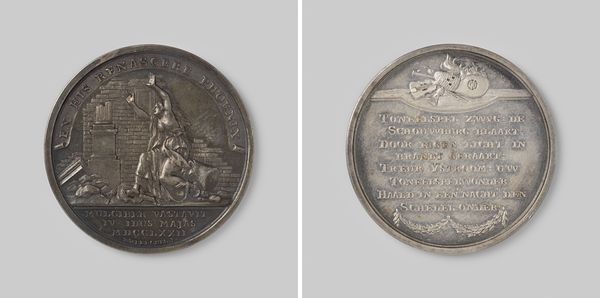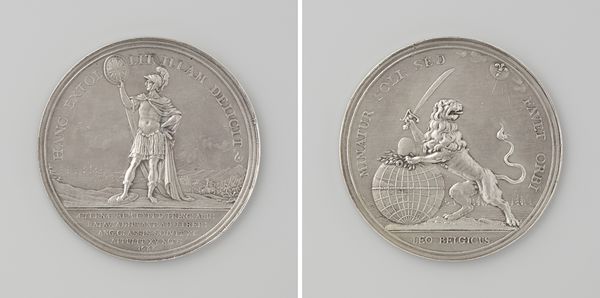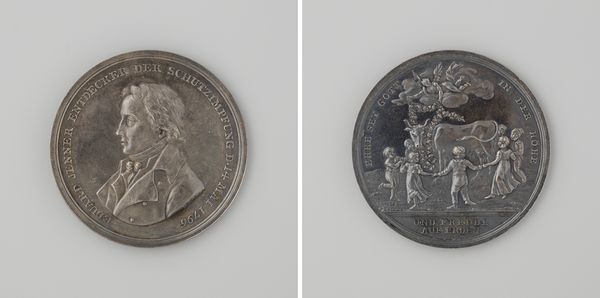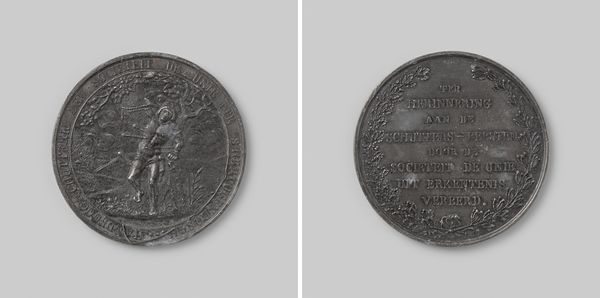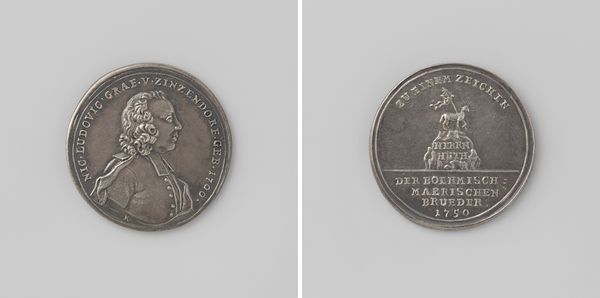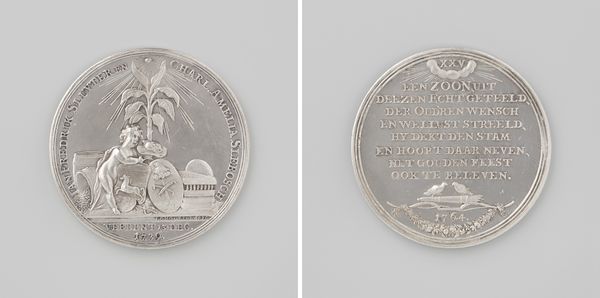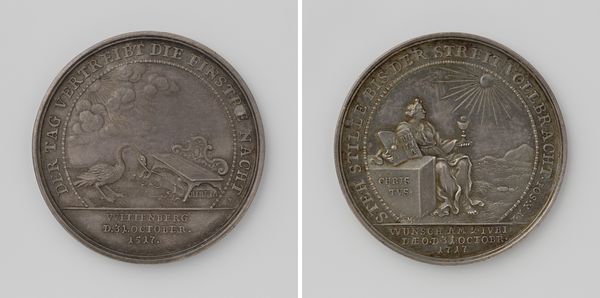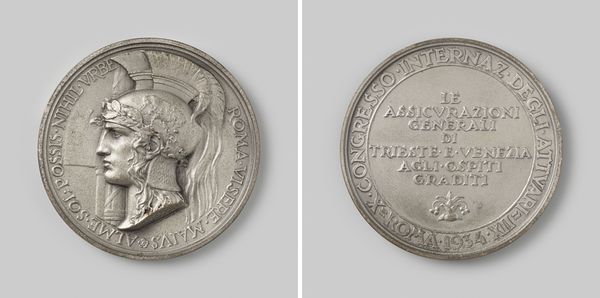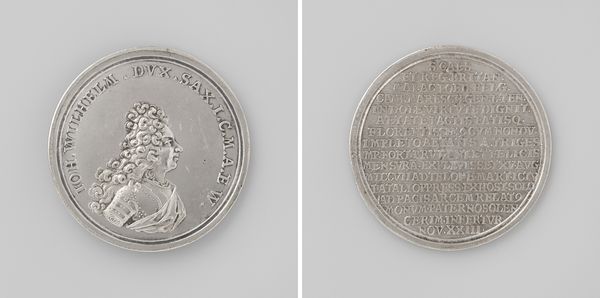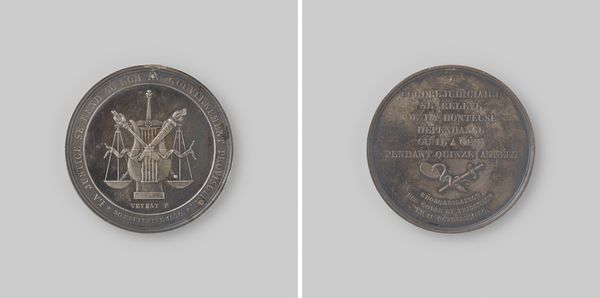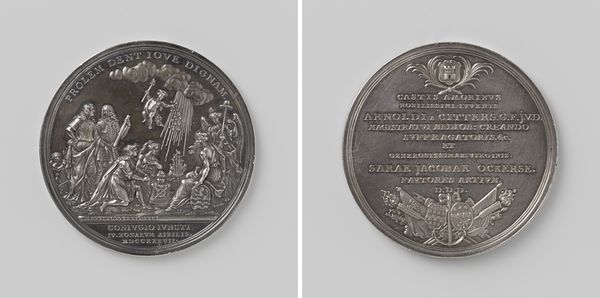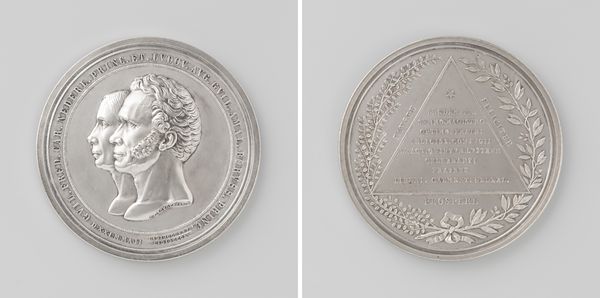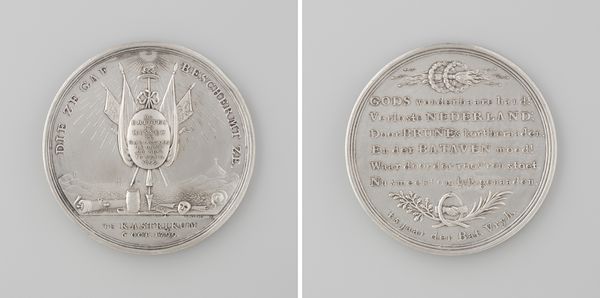
Dimensions: Diam. 4 in. (10.2 cm)
Copyright: Public Domain
Curator: Let’s consider this commemorative medal made in 1868 to celebrate Cyrus Field and the laying of the Atlantic cable. It’s on view here at The Met. Editor: My first impression is one of somber triumph. The portrait and surrounding symbols evoke a profound sense of achievement rendered in hard metal. Curator: The medal, designed by William Barber, encapsulates the neoclassical ideal of heroic achievement, doesn’t it? Look how Field's profile is framed by classical elements. Editor: Absolutely. The obverse with its austere bust rising above stylized waves speaks of ambition tempered by stoicism, all rendered in that relief with a limited depth of field, pushing the focal point outward. Curator: On the other side, you see an inscription noting the Congressional resolution that sanctioned this commemoration. There’s also a globe wreathed with foliage, underscoring Field’s accomplishment of uniting the world through communication. Editor: The choice of metal as a medium—presumably bronze or silver, considering its monochrome appearance—isn't arbitrary. It denotes endurance and lasting legacy, solidifying Field's place in the pantheon of American heroes. But there is something cold about it, do you agree? Curator: Perhaps, but the laurel wreath crowning Field in the portrait suggests more than just achievement; it represents a cultural aspiration toward knowledge and progress. We see that progress coded in that cable that connects nations. Editor: Indeed, it presents that 19th-century enthusiasm for progress, an era convinced of technological determinism, captured elegantly in a symbolic gesture, hard struck into the bronze. The limited grayscale underscores this feeling of nostalgia and heroic humanism. Curator: The Congressional medal serves as a tangible artifact reflecting the United States' sense of national identity during Reconstruction. How to move into a unified and progressive future: quite literally connecting 'the Old World with the New.' Editor: I see this object as a successful convergence of form and historical narrative, an expression of American aspirations during an epoch of rapid transformation. The scale and density underscore those long-past ambitions. Curator: An ambition solidified, you might say. It gives one much to consider. Editor: Indeed. It renders in physical form something immense.
Comments
No comments
Be the first to comment and join the conversation on the ultimate creative platform.
